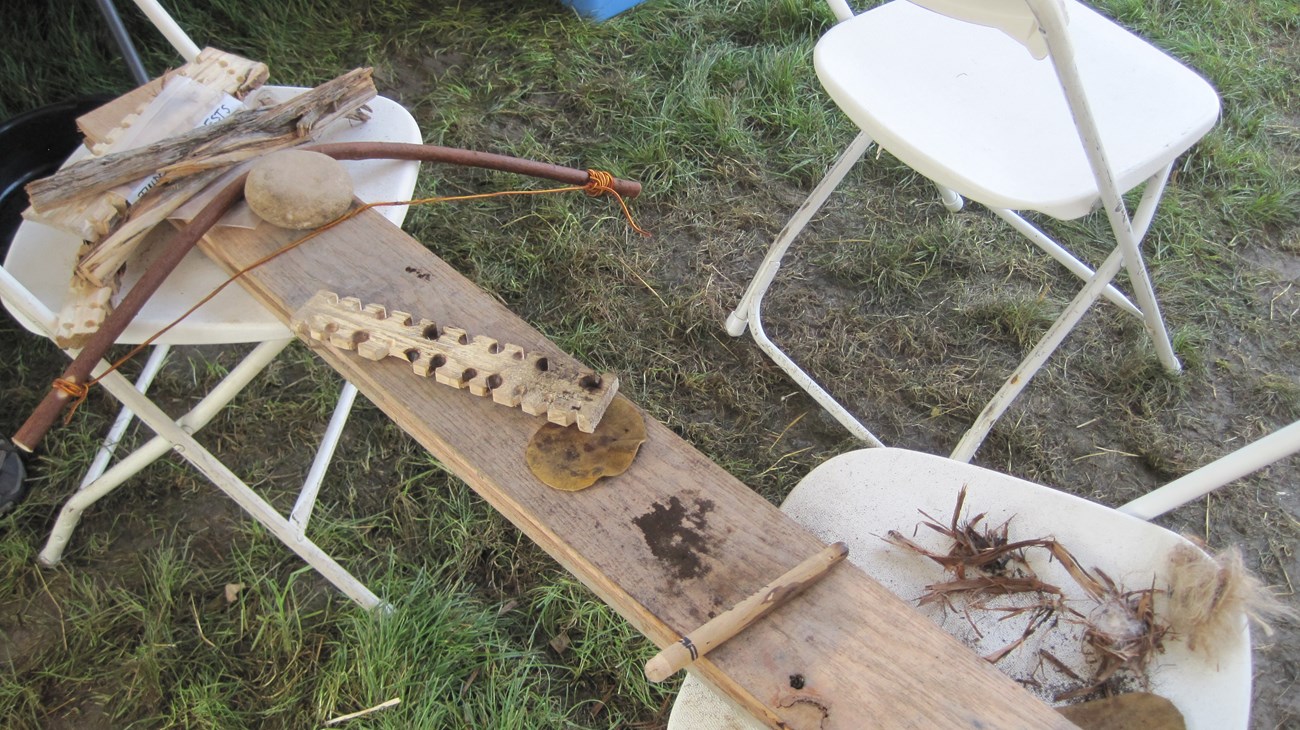Last updated: March 6, 2023
Article
Try It Yourself

Wondering how archeologists get started? Or how they make sense of everything they dig up?
Try these projects to see for yourself how archeologists think about places and people in the past. Let an adult know what you're up to!
Reading a landscape helps archeologists imagine the lives of past peoples. You can try this yourself.
Choose a place to observe closely, like your backyard, a park or a city block. Make a map of what you see.
- Mark the orientation: show where the sun rises and sets; where north, south, east and west are.
- Note its features, such as water sources or roads, low places (called depressions), hills and valleys.
- Draw the vegetation - is it shrubby, grassy? Are there trees? Describe the soil: Dark or light? Sandy? Clay-ey?
- Speculate on the kinds of artifacts you might find in these places. What would they tell you?
Tens or hundreds or thousands of years ago, someone standing where you are likely saw a very different landscape. Where would they go for food and water? Where could a house get good light and heat from the sun? Where are the safe places for kids to play?
You've just started a survey for possible places to dig, like an archeologist, and put together how people may have used a landscape.
Head to the kitchen for your first excavation. Team up with a group of friends to exchange bags for analysis. Garbage can be really gross, but most household garbage is not dangerous. During the analysis, you may wish to wear gloves, an apron, and a face mask. Check with an adult to make sure this project is ok.
- Every day, for seven days, make a list of EVERYTHING that goes into the bag. Record what each object is, the quantity of each, the brand, the material, and its use. For example, you might record: Gym shoes; leather, rubber, and canvas; no brand; for school. Recycle and compost as your family normally does, but record this information separately.
- After seven days, number each bag to make each family's garbage anonymous and exchange them. Dump each bag in the yard or on a big table protected with plastic. Archeologists would call this sloppy mess an "assemblage." Decide how to sort the artifacts, but have reasons for your choices. For example, you might sort by material, shape, or smell.
- Describe the contents of the bag. What activities does the assemblage reflect? How did recycling and composting affect your interpretation? If you collected for two weeks, or a month, what might you expect to see?
When that urge to clean your room strikes, make it archeological. Pretend you're an archeologist excavating through layers of ancient detritus, then put your stuff where it belongs.
- Choose a pile. What is on top? When did you put it there? Why?
- Excavate down through the pile. The stuff you put there most recently will be on top, but the stuff you put there first will be on the bottom (and possibly, ew). You've just learned about the law of superimposition - the earliest layers are on the bottom of an archeological excavation.
- Put stuff in its correct place. What goes in the laundry? What goes in the closet? What goes back to the kitchen? What do you shove under the bed? Why did you decide to put stuff where it went? Do you share a room? How do you know what stuff belongs to whom?
What will archeologists in the future think about your room?
